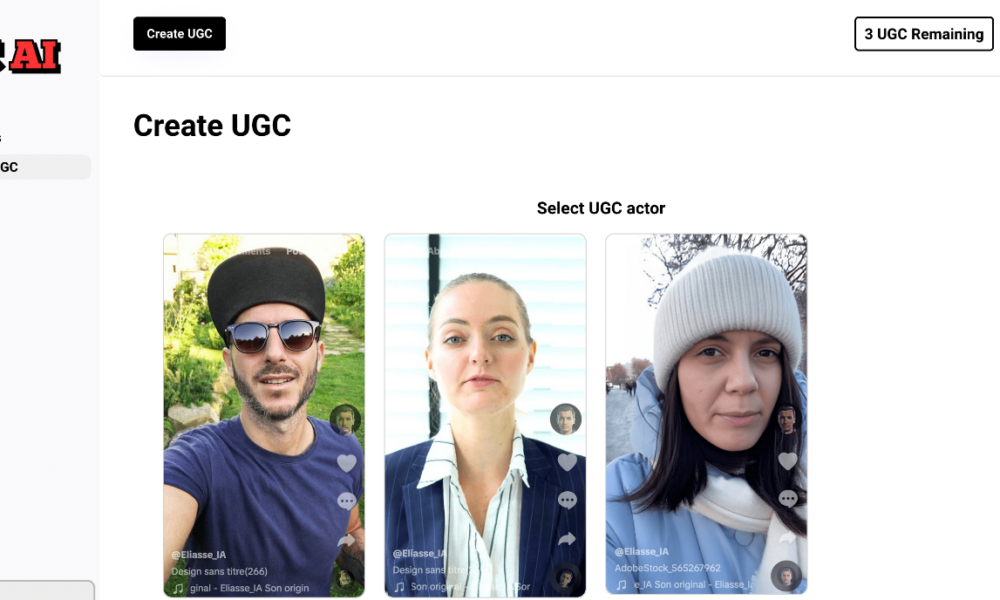Table of Contents
Show more
Show less
If you’re looking to create an online store, there are a number of options of how to go about it. You could use Shopify, BigCommerce or any number of other paid platforms, for example.
But what if you don’t want to spend any money? In this guide, we’ll walk you through how to make an online store for free. We’ll also share what you can do to build up and scale your store once you start making a profit.
Step 1. Decide on a niche
A niche helps your audience understand what your store is about. It also makes it easier to target keywords for search and create content that will draw potential customers in. For example, if you sell clothes, your niche might be ‘women’s plus-size workwear’. If someone asks friends and family for recommendations for women’s plus-size workwear, you want them to recommend your online store.
Other niche ideas include:
- DIY hydroponic equipment
- Book editing services
- Organic tea
- Fitness printables
- Sports memorabilia
- Custom-made furniture
- Homeopathic remedies and supplements
- Vacation packages for those with special needs
- Tutoring services
If you sell services, a specialised niche can also allow you to charge a premium. For example, while a dentist looking to hire a copywriter for the clinic’s blog can hire any any copywriter, she will recognise a copywriter for dental offices as a specialist and is likely to pay more.
Product-based businesses typically use a store name, whereas service-based businesses will often use the name of the servicer. But regardless of the niche or type of product or service, your name should be easy to spell, memorable and the respective domain name and social media handle should be available.
Step 2. Choose a platform
Shopify and BigCommerce are the two of the most popular e-commerce platforms. They’re both great, but they also come with a price tag. If you want to start an online store for free, your best bet is to use a platform such as Weebly. It’s not as flexible or customisable as Shopify and BigCommerce, but it does offer a free forever plan.
The free version of Weebly doesn’t let you have a custom domain name, which means your URL will look like forbes.weebly.com instead of forbes.com. As you start to make money with your online store, you can move to a paid plan with Weebly, or migrate to a different e-commerce platform for greater versatility.
Step 3. Set up your store
For this tutorial, we’re using Weebly.com, the website builder that lets you create a free online store. It’s easy to get started and doesn’t require any coding knowledge. Plus, you can use Weebly to create a professional website for free if you upgrade to a paid plan later on. Best of all, it’s backed by Square, makers of point-of-sale card readers.
- Go to Weebly.com and click the ‘Sign Up’ button in the top right corner
- Complete the form with your personal information
- On the following screen, choose ‘Try Square Online’
- Next, indicate which type of merchant best describes you, Individual or Business
- Enter your store’s name (this is what will appear on customer receipts)
- Select your business type
- Choose the type of product you sell (for example, physical items, services, memberships)
- Select how you want to fulfill orders (for example ship items, pick up or delivery)
- Choose the type of store you want, a single-page store or a full website with an online catalogue.
Step 4. Customise your online store
Next, it’s time to customise your online presence. To do this, open the site editor. Then, add your logo and select your colour scheme. Select a domain name (eg, yourbusinessname.com). Customise your header, footer and site navigation. Add, remove and customise any additional web pages (eg, about, contact). Finally, create your product catalogue by adding items and shipping information.
- From your user dashboard, select ‘Design now’.
- Upload your logo and select your main color, fonts and style of button.
- Select a domain name.
- Customise your header, main banner, image gallery, location and hours, email newsletter and footer.
- Add items to sell.
- Establish shipping rates.
- Set up sales tax for online orders.
- Hit ‘Publish’.
Step 5. Market your online store
Now that you’ve set up your online store, it’s time to start marketing it. This is where a niche comes in handy again. You can use your niche to target specific keywords and create content that will attract your target audience.
Here are some ideas for marketing your online store:
- Affiliate marketing: Get others to promote your store in exchange for a commission on each sale
- Guest posts: Write guest posts for other websites in your niche and include a link to your store
- Social media: Share photos of your products on Instagram, write product reviews on Facebook and tweet about special offers
- Email marketing: Send out a weekly email newsletter with helpful tips, exclusive offers and links to new products
- Paid advertising: Use Google Ads or Facebook Ads to reach people who are already interested in what you’re selling
- Influencers: Work with influential bloggers and vloggers in your niche to promote your store. Some influencers require payment to do this, while many micro-influencers are happy to accept free products
- Client loyalty rewards: Offer discounts and rewards to customers who refer friends to your store or leave reviews
- Giveaways: Host a contest or giveaway on social media or your blog to generate interest in your store
- Promotional incentives: Offer discounts to customers who spend a certain amount of money or buy specific products
- Podcasts: This method works best for service-based businesses. Start a podcast that discusses your service and includes advertisements for your online store. Or, be a guest on a related podcast
There are many different ways to market an online store. The key is to find the marketing strategies that work best for you and your niche. Experiment with different marketing techniques and track your results to see what works best for your business.
Frequently Asked Questions (FAQs)
How do I ship products to my customers?
You’ll need to decide on a shipping method and set up shipping rates. We recommend using a tried and tested shipping service that will allow you to get the best shipping rates.
You can use a shipping calculator to help customers estimate shipping costs.
How do I track my online store’s performance?
To track your store’s performance, you’ll need to set up some analytics tools. We recommend using Google Analytics to track website traffic, conversion rates and other essential metrics.
You can also use other tools such as Hotjar, Mixpanel and Kissmetrics.
How do I create a logo for my online store?
You can create a logo for free using online tools like Canva or Logo Maker. You can also hire a freelance graphic designer to create a custom logo for your store. Popular marketplaces for graphic designers for hire include Fiverr, Upwork and Freelancer.com.
How do I create a tagline for my online store?
A great way to create a tagline is to brainstorm a list of words that describe your business. Once you have a list of words, try to combine them into a short and catchy phrase.
You can also use a tagline generator to help you create a tagline.
How do I choose a domain name for my online store?
The best way to choose a domain name is to think about your target customers and what words they would use to search for your store.
You can also use a domain name generator to help you find an available domain name. Once you’ve found a domain name you like, you can register it through a domain registrar.




